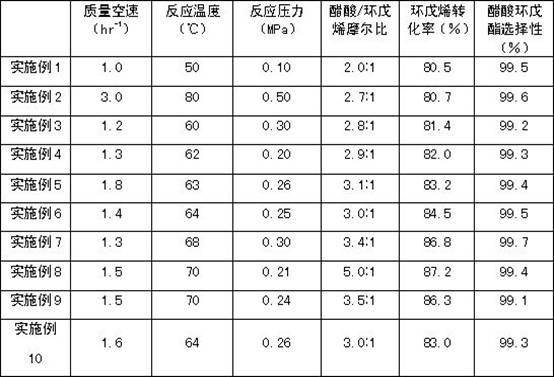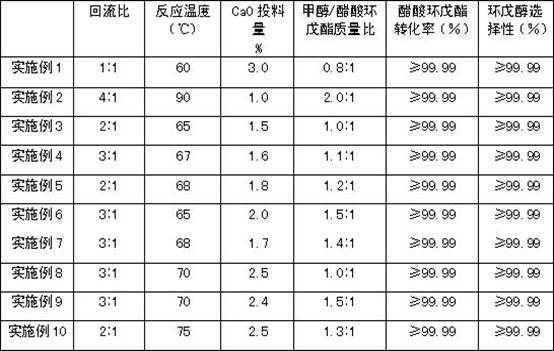Method for preparing cyclopentanol from cyclopentene
A technology of cyclopentene and cyclopentanol, which is applied in the field of preparing cyclopentanol by transesterification of CaO catalyst, can solve problems such as pollution and equipment corrosion environment, and achieve the effects of simplified process and high use efficiency
- Summary
- Abstract
- Description
- Claims
- Application Information
AI Technical Summary
Problems solved by technology
Method used
Image
Examples
Embodiment 1~10
[0023] 1. Esterification reaction
[0024] The esterification reaction is carried out in a tubular fixed bed reactor with a size of φ25mm×1500mm. The reactor is filled with 50 grams of a spherical sulfonic acid-based cation exchange resin catalyst with a particle size of 0.40-1.25 mm to form a fixed-bed catalyst bed, and the mass exchange capacity of the resin is 4.5 mmol / g. The outside of the reactor is equipped with a circulating hot water temperature control jacket, and temperature measuring platinum resistors are installed on the upper, middle and lower parts of the catalyst bed. The reaction feed volume is controlled by the feed pump, and the system pressure is regulated by the back pressure valve.
[0025] The reaction raw materials cyclopentene and acetic acid are reacted through a fixed bed according to the set feed amount, and the esterification reaction is carried out according to the set reaction conditions. The cyclopentyl acetate product of the esterification reactio...
PUM
 Login to View More
Login to View More Abstract
Description
Claims
Application Information
 Login to View More
Login to View More - R&D
- Intellectual Property
- Life Sciences
- Materials
- Tech Scout
- Unparalleled Data Quality
- Higher Quality Content
- 60% Fewer Hallucinations
Browse by: Latest US Patents, China's latest patents, Technical Efficacy Thesaurus, Application Domain, Technology Topic, Popular Technical Reports.
© 2025 PatSnap. All rights reserved.Legal|Privacy policy|Modern Slavery Act Transparency Statement|Sitemap|About US| Contact US: help@patsnap.com


